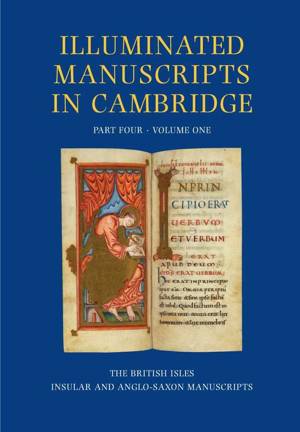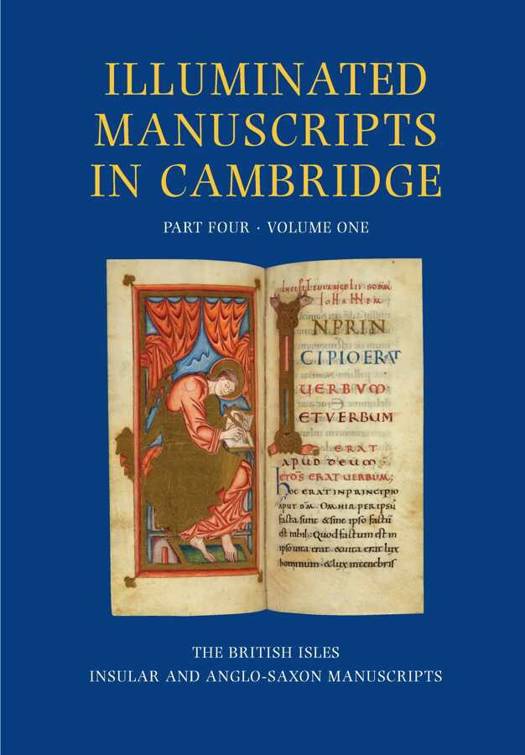
Je cadeautjes zeker op tijd in huis hebben voor de feestdagen? Kom langs in onze winkels en vind het perfecte geschenk!
- Afhalen na 1 uur in een winkel met voorraad
- Gratis thuislevering in België vanaf € 30
- Ruim aanbod met 7 miljoen producten
Je cadeautjes zeker op tijd in huis hebben voor de feestdagen? Kom langs in onze winkels en vind het perfecte geschenk!
- Afhalen na 1 uur in een winkel met voorraad
- Gratis thuislevering in België vanaf € 30
- Ruim aanbod met 7 miljoen producten
Zoeken
A Catalogue of Western Book Illumination in the Fitzwilliam Museum and the Cambridge Colleges
Part Four: England, Ireland, Scotland, Wales. Volume One: Insular and Anglos-Saxon Manuscripts
Stella Panayotova
Hardcover | Engels
€ 222,60
+ 445 punten
Uitvoering
Omschrijving
This publication is the first volume to appear in the catalogue series devoted to the British Isles and covers Insular and Anglo-Saxon manuscripts produced between c. 700 and c. 1100 AD. This was a period in which Britain witnessed a great blossoming of cultural awareness and artistic craftsmanship. Under the reign of King Alfred towards the end of the ninth century England experienced a renewed impetus for scholarly activity, and as a result the production of books intensified greatly. By the early tenth century, influenced and inspired by new trends and ideas from Continental Europe, English art began to flourish, and manuscript illumination especially made a great impact with the high quality of its figure style and decorated initials, and with its elegance of script and mise-en-page. Cambridge is fortunate in having a significant collection of manuscripts from this period, and the ninety-seven works catalogued and richly illustrated here are amongst the finest surviving examples of Anglo-Saxon decoration. Included here are the fragmentary yet striking remains of a once magnificent early eighth-century Northumbrian Gospels, while an early tenth-century copy of Bede's Life of St Cuthbert contains a full-page image of King Aethelstan offering a book to St Cuthbert, that may be the earliest presentation scene surviving in England. In another tenth-century manuscript, Amalarius of Metz's Liber officialis, one may see the fullest repertoire of ingenious interlace and zoomorphic initials-the high-point of Anglo-Saxon drawing skills. In yet another Gospel book, from the early eleventh century, a de luxe manuscript resplendent with gold, one can find all the characteristic features of Anglo-Saxon iconography and style, including exuberant frame ornamentation, as well as examples of drapery with agitated fluttering hemlines, the hall-mark of Carolingian-inspired draughtsmanship. In addition to the detailed catalogue of Anglo-Saxon manuscripts produced in England, Ireland and Wales, the volume also includes an Addenda to the previously published Part One of this series, listing thirteen Frankish manuscripts from the eighth to the tenth century that had not been catalogued before. Among these is the well-known copy of Hrabanus Maurus' De laudibus sanctae crucis whose place of origin and circumstances of production still remain to be established. Every manuscript catalogued is illustrated in full colour, mostly with several illustrations, and frequently with special detail images. There is also an exhaustive bibliography and the catalogue is fully indexed including a comprehensive iconographic index.
Specificaties
Betrokkenen
- Auteur(s):
- Uitgeverij:
Inhoud
- Aantal bladzijden:
- 360
- Taal:
- Engels
Eigenschappen
- Productcode (EAN):
- 9781909400047
- Verschijningsdatum:
- 5/02/2014
- Uitvoering:
- Hardcover
- Formaat:
- Genaaid
- Afmetingen:
- 236 mm x 335 mm
- Gewicht:
- 2177 g

Alleen bij Standaard Boekhandel
+ 445 punten op je klantenkaart van Standaard Boekhandel
Beoordelingen
We publiceren alleen reviews die voldoen aan de voorwaarden voor reviews. Bekijk onze voorwaarden voor reviews.









